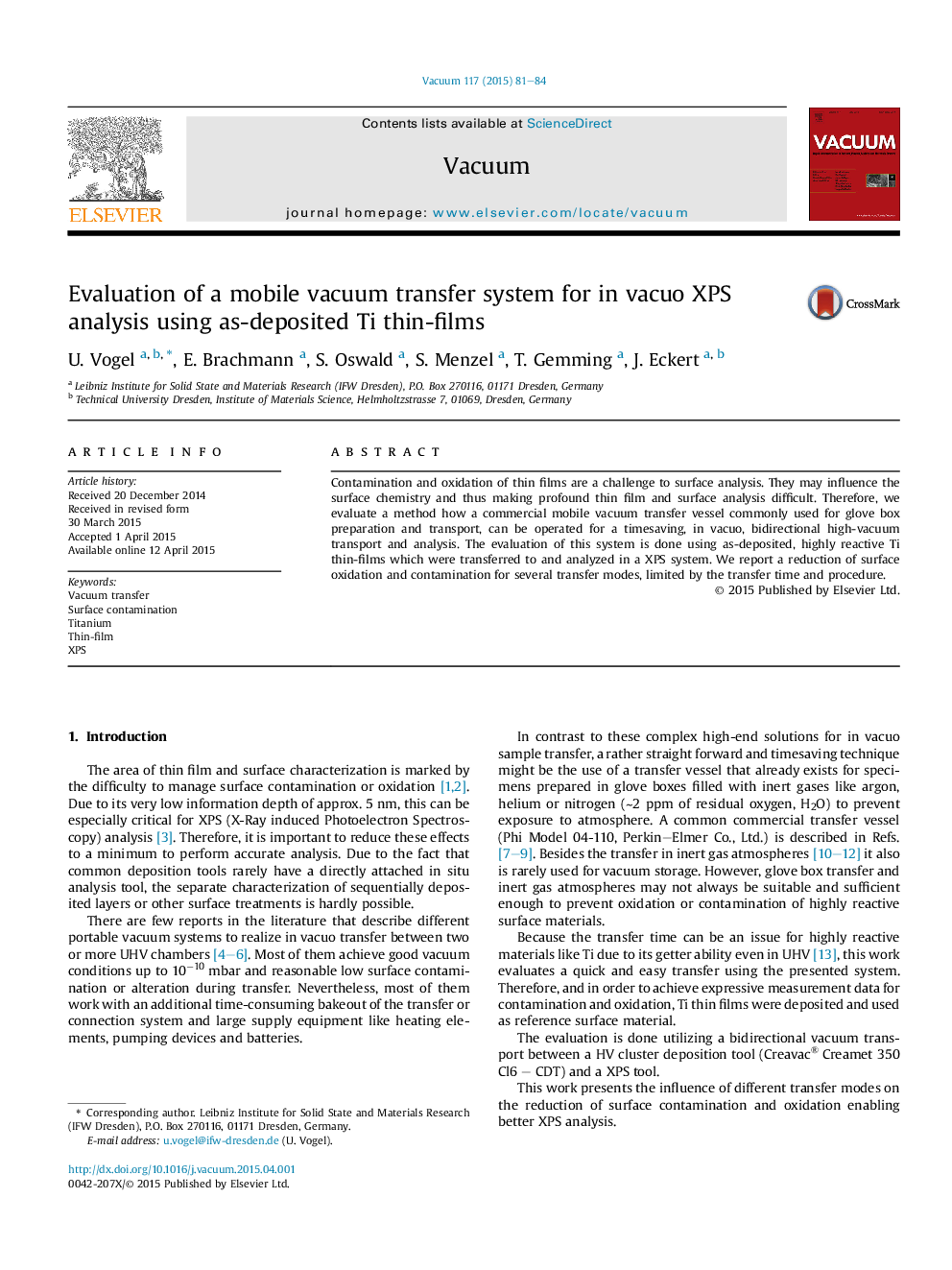| Article ID | Journal | Published Year | Pages | File Type |
|---|---|---|---|---|
| 1688301 | Vacuum | 2015 | 4 Pages |
•The presented commercial mobile vacuum chamber is evaluated for quasi in vacuo HV transfer.•Surface oxidation and contamination is analysed at deposited, highly reactive Ti thin-films.•The pressure range in the transfer vessel is between 1 × 10−5 mbar and 1 × 10−1 mbar with a transfer time of 3 min–40 min.•The XPS analysis shows substantially reduced surface oxidation/contamination after transfer.•Additional pumping during transfer is not beneficial for Ti thin-films in this pressure range due to increased transfer time.
Contamination and oxidation of thin films are a challenge to surface analysis. They may influence the surface chemistry and thus making profound thin film and surface analysis difficult. Therefore, we evaluate a method how a commercial mobile vacuum transfer vessel commonly used for glove box preparation and transport, can be operated for a timesaving, in vacuo, bidirectional high-vacuum transport and analysis. The evaluation of this system is done using as-deposited, highly reactive Ti thin-films which were transferred to and analyzed in a XPS system. We report a reduction of surface oxidation and contamination for several transfer modes, limited by the transfer time and procedure.
